
Journal of Electrical Engineering & Technology
Scope & Guideline
Fostering Knowledge in Electrical and Electronic Technologies
Introduction
Aims and Scopes
- Electrical Energy Systems:
Research related to the generation, distribution, and management of electrical energy systems, including renewable energy integration, smart grids, and energy storage solutions. - Control Systems and Automation:
Development and optimization of control strategies for electrical systems, including robust control, model predictive control, and adaptive systems. - Power Electronics and Drives:
Studies on power converters, inverters, and electric motor drives, focusing on their design, control, and application in various sectors. - Smart Technologies and IoT Applications:
Exploration of Internet of Things (IoT) applications in electrical engineering, including smart grids, smart buildings, and automation. - Electrical Machines and Drives:
Innovations in the design, modeling, and control of electrical machines, with applications in automotive, industrial, and renewable energy sectors. - Signal Processing and Data Analysis:
Application of advanced signal processing techniques and machine learning algorithms for fault detection, classification, and predictive maintenance in electrical systems. - Electromagnetic Compatibility and Interference:
Research focused on electromagnetic interference (EMI) and electromagnetic compatibility (EMC) in electrical systems, including mitigation techniques.
Trending and Emerging
- Renewable Energy Technologies:
There is a significant increase in research focusing on renewable energy technologies, including solar, wind, and hybrid systems, emphasizing sustainability and carbon neutrality. - Machine Learning and Artificial Intelligence in Electrical Engineering:
The application of machine learning and AI techniques in various electrical engineering domains is rapidly growing, particularly for predictive maintenance, load forecasting, and smart grid management. - Electric Vehicles and Smart Transportation Systems:
Research on electric vehicles (EVs), charging infrastructure, and smart transportation systems is trending, addressing the need for sustainable urban mobility solutions. - Energy Management Systems:
There is an emerging focus on sophisticated energy management systems that integrate various energy sources and optimize demand response strategies. - Cybersecurity in Smart Grids:
With the rise of smart grids and IoT applications, research focusing on cybersecurity measures to protect electrical systems from potential threats is gaining prominence. - Advanced Power Electronics:
There is a growing interest in advanced power electronics, particularly in the development of new converter topologies and control strategies for enhancing system efficiency.
Declining or Waning
- Traditional Electrical Infrastructure:
Research on conventional electrical infrastructure, such as legacy power systems and traditional grid management, has seen a decrease as focus shifts to modernized and smart grid technologies. - Analog Circuit Design:
There appears to be a waning interest in purely analog circuit design topics, likely due to the increasing prevalence of digital solutions and integrated circuit technology. - Low-Power Analog Devices:
Research in low-power analog devices and their applications is declining as the industry moves toward more integrated, digital solutions that provide higher efficiency. - Conventional Energy Sources:
Studies focused on conventional energy sources, such as coal and natural gas, have decreased as the emphasis has shifted toward renewable energy sources and sustainability.
Similar Journals

International Transactions on Electrical Energy Systems
Exploring the Future of Energy EngineeringInternational Transactions on Electrical Energy Systems is a distinguished peer-reviewed journal published by WILEY-HINDAWI, focusing on the dynamic field of electrical energy systems. With an impactful reach, this journal, with ISSN 2050-7038, has established itself as a prominent resource for researchers and practitioners in electrical and electronic engineering, energy engineering, and power technology since its inception in 2012. As of 2022, the journal transitioned to an Open Access model, ensuring widespread accessibility to cutting-edge research and advancements. It is recognized for its strong academic standing, holding a Q2 quartile ranking across multiple disciplines, including modeling and simulation. The journal's Scopus ranks reflect its influence, with rankings in the 76th to 87th percentiles across various fields. The International Transactions on Electrical Energy Systems is dedicated to fostering innovation and encouraging collaboration within the energy community, making it an essential platform for knowledge dissemination and discussion.

IEEE Latin America Transactions
Transforming Ideas into Impactful ResearchIEEE Latin America Transactions is a distinguished journal published by the Institute of Electrical and Electronics Engineers (IEEE), focusing on the broad and impactful fields of Computer Science and Electrical and Electronic Engineering. With an ISSN of 1548-0992, this journal serves as a vital platform for scholarly communication, featuring high-quality research articles that contribute to advancements in these technical domains. As of 2023, it holds a commendable Q2 ranking in Computer Science (Miscellaneous) and a Q3 classification in Electrical and Electronic Engineering, reflecting its significant contributions to the field. The journal spans from 2003 to 2024, ensuring a rich archive of contemporary and relevant research. Researchers and professionals can access its articles without open access restrictions, enhancing its visibility and reach across the global scientific community. Set against the backdrop of its operational base in Piscataway, NJ, this journal not only serves as an academic repository but also plays a crucial role in bridging knowledge gaps in Latin America and beyond.
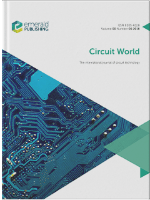
CIRCUIT WORLD
Pioneering Research for a Dynamic IndustryCIRCUIT WORLD, published by Emerald Group Publishing Ltd, is a pivotal academic journal in the fields of Electrical and Electronic Engineering and Industrial and Manufacturing Engineering. Established in 1974, this journal has provided a vital platform for researchers and professionals to disseminate their findings and advancements over nearly five decades. With a notable Q3 ranking in both categorization areas as of 2023, CIRCUIT WORLD emphasizes the importance of innovation and practical applications in engineering. The journal facilitates the exchange of ideas, featuring case studies, reviews, and cutting-edge research that address contemporary challenges in the industry. Although not an open-access journal, it remains dedicated to contributing significantly to the academic community, making it an essential resource for students and professionals committed to advancing their knowledge and expertise in these dynamic fields. With a focus on providing insights into current trends and future directions, CIRCUIT WORLD stands out as a crucial catalyst for scholarly collaboration and innovation.

Journal of Electromagnetic Engineering and Science
Driving Innovation Through Open Access ResearchThe Journal of Electromagnetic Engineering and Science (ISSN: 2671-7255, E-ISSN: 2671-7263) is a premier Open Access journal published by the Korean Institute of Electromagnetic Engineering & Science. Since its establishment in 2001, it has been dedicated to advancing knowledge in the fields of Electrical Engineering, Electromagnetic Theory, and Communications, making significant contributions to both academia and industry. The journal holds an impressive Q2 quartile ranking in notable categories such as Computer Networks and Communications and Electrical and Electronic Engineering as of 2023, reflecting its robust scientific impact and reputation. It is indexed in Scopus, with commendable rankings in multiple fields, enhancing its visibility and reach among researchers. The journal's open-access model ensures that cutting-edge research is accessible to a global audience, fostering collaboration and innovation. Researchers, professionals, and students in the domain are encouraged to contribute and engage with high-quality articles that cover the latest advancements and trends in electromagnetic engineering and associated sciences.
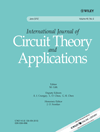
INTERNATIONAL JOURNAL OF CIRCUIT THEORY AND APPLICATIONS
Unveiling the Future of Circuit Theory and TechnologyINTERNATIONAL JOURNAL OF CIRCUIT THEORY AND APPLICATIONS serves as a premier platform for researchers and practitioners in the fields of applied mathematics, electrical and electronic engineering, and materials science. Published by Wiley, this esteemed journal, with an ISSN of 0098-9886 and an E-ISSN of 1097-007X, has been in circulation since 1973, providing insightful contributions and advanced research findings through 2024. It holds a commendable reputation across multiple disciplines, reflected in its 2023 ranking in the Q3 category across applied mathematics, computer science applications, and electronic materials. Researchers engaging with this journal can expect rigorous peer-reviewed articles that address both theoretical and practical implications, thereby fostering advancements in circuit theory and its multitude of applications. While the journal is not open access, it continues to play a significant role in disseminating high-caliber research crucial for scholars and professionals alike.
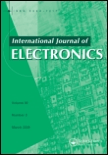
INTERNATIONAL JOURNAL OF ELECTRONICS
Connecting Ideas and Innovations in Electrical EngineeringINTERNATIONAL JOURNAL OF ELECTRONICS, published by Taylor & Francis Ltd, is a pivotal platform for disseminating cutting-edge research in the field of Electrical and Electronic Engineering. With a rich publication history dating back to 1965, this journal is renowned for its rigorous peer-review process and its commitment to advancing knowledge across vital areas such as circuit design, communications, and microelectronics. Although it currently holds a Q3 quartile ranking in the category, the journal's broad scope and inclusion of contemporary research trends play a crucial role in shaping the future of electronics. Its ISSN (0020-7217) and E-ISSN (1362-3060) ensure that both print and digital versions are accessible. Researchers, professionals, and students alike can benefit from the journal’s valuable insights and findings contributing to advancements in technology and engineering. With its continuously evolving focus, the INTERNATIONAL JOURNAL OF ELECTRONICS stands as a significant resource in the academic landscape of electronic engineering.

IEEE Electrification Magazine
Pioneering Advances in Electrical Engineering PracticesIEEE Electrification Magazine, published by the Institute of Electrical and Electronics Engineers (IEEE), serves as a pivotal platform in the field of Electrical and Electronic Engineering. With an ISSN of 2325-5897 and an E-ISSN of 2325-5889, this esteemed journal aims to bridge the gap between research and practical applications in electrification, addressing current trends and technological advancements since its inception in 2013. Notably recognized as a Q1 journal in Electrical and Electronic Engineering and a Q2 journal in Energy Engineering and Power Technology for 2023, it ranks in the 72nd and 69th percentiles, respectively, within its categories according to Scopus. As a vital resource for researchers, professionals, and students, it delivers thought-provoking articles that stimulate discourse and innovation within the electrification landscape, though it currently does not offer open access. The editorial excellence and rigorous peer-review process ensure that each published piece contributes meaningfully to the dynamic field of electrification, solidifying the journal’s importance as a leading voice in advancing engineering practices and education.

IEEE Open Journal of Industry Applications
Bridging theory and practice in industry applications.IEEE Open Journal of Industry Applications is a premier open-access publication established in 2020 by the esteemed IEEE-INST ELECTRICAL ELECTRONICS ENGINEERS INC, dedicated to advancing the fields of Control and Systems Engineering, Electrical and Electronic Engineering, and Industrial and Manufacturing Engineering. With a strong commitment to disseminating high-quality research, the journal has rapidly garnered recognition, achieving a Q1 quartile ranking in multiple engineering categories, notably securing a rank of 21st out of 321 in Control and Systems Engineering and 26th out of 384 in Industrial and Manufacturing Engineering as of 2023. This journal not only facilitates immediate access to cutting-edge findings but also fosters an inclusive academic environment where researchers, professionals, and students can engage with and contribute to the evolving landscape of industry applications. By embracing open access, it ensures that pivotal research is freely available, thereby maximizing its impact on the scientific community. For potential contributors and readers, the journal's robust Scopus rankings—placing it in the top 7% of its fields—highlight its significance as a leading platform for innovative discussions and explorations in engineering.
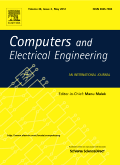
COMPUTERS & ELECTRICAL ENGINEERING
Empowering Innovation in Technology and Engineering.COMPUTERS & ELECTRICAL ENGINEERING is a premier academic journal published by PERGAMON-ELSEVIER SCIENCE LTD, based in the United Kingdom. Established in 1973, the journal has consistently contributed to the fields of Computer Science, Control and Systems Engineering, and Electrical and Electronic Engineering. With an impressive impact factor and ranked in the top quartile (Q1) across these domains, it is recognized as a pivotal resource for researchers, practitioners, and students alike. The journal aims to disseminate high-quality research articles, reviews, and technical notes, with the goal of advancing understanding and fostering innovation within and beyond its scope. Researchers can enjoy unparalleled access to cutting-edge findings and technological advancements through contributions that span both theoretical frameworks and practical applications, making it an essential platform for anyone dedicated to exploring the intersections of these dynamic fields.
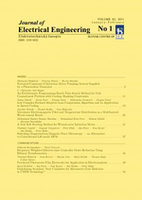
Journal of Electrical Engineering-Elektrotechnicky Casopis
Advancing Knowledge in Electrical Engineering Practices.Journal of Electrical Engineering - Elektrotechnicky Casopis is a distinguished peer-reviewed journal published by Slovak University of Technology, dedicated to advancing the field of Electrical and Electronic Engineering. With an ISSN of 1335-3632, this journal aims to disseminate high-quality research findings, innovative methodologies, and significant technological advancements that contribute to the development of electrical engineering practices. Operating since 2004, it embraces an open-access model to enhance the visibility and accessibility of scholarly articles, thereby fostering knowledge exchange within the global research community. The journal holds a respectable Q3 categorization in the field, ranked 544 out of 797 in Scopus, indicating its growing influence within the discipline. Through rigorous peer-review processes, it provides a platform for researchers, professionals, and students alike to publish their work and stay informed on cutting-edge developments. Located in Bratislava, Slovakia, the journal is an essential resource for anyone involved in the rapidly evolving world of electrical engineering.